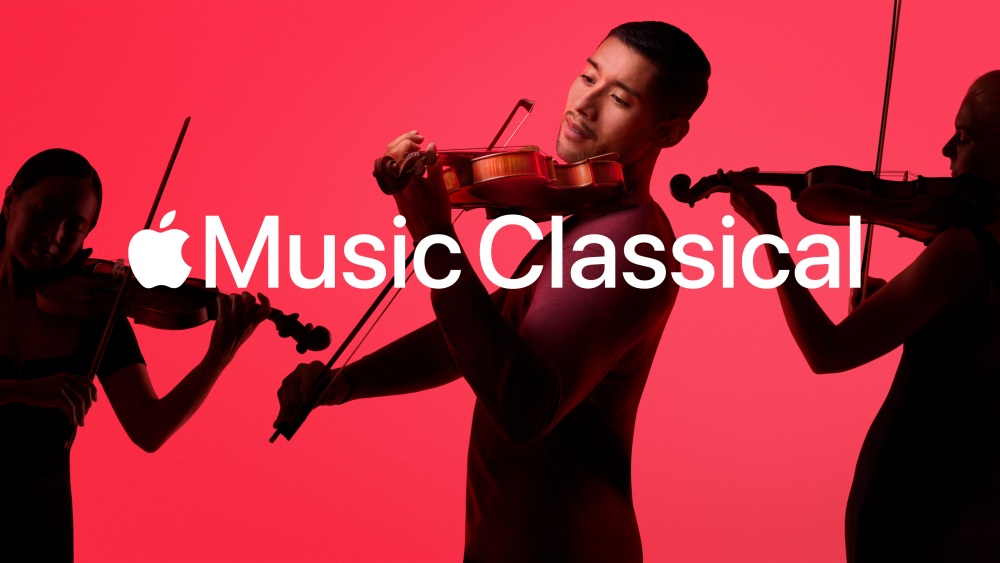
I’ve been listening to classical music all my life, been to hundreds of symphony orchestra concerts, and even written concert notes for the LA Phil. But I often still feel like a yokel in the woods without a map when it comes to navigating classical music.
So, like a hungry mouse in a maze, I journeyed into the new Classical app from Apple.
Classical is an entirely different species from popular music — i.e., the music of the people for the past century. Pop artists may crib chord progressions from Bach or add string arrangements for sophistication, and pop music certainly wouldn’t exist without its classy ancestor. But the Classical app makes it clear just how disparate these two animals are, and it starts with the way they’re organized and cataloged.
Apple’s regular Music app — the software formerly known as iTunes — was designed with a pop mentality. At its core are “Songs,” which are grouped into “Artists,” “Albums” and “Composers.” Zoom out and you get a few dozen “Genres,” one of which is Classical.
But classical music — a ridiculously blobby umbrella of a term — isn’t divisible by units of songs, or even really artists and albums. Those terms are reflections of pop as an inherently recorded kind of music, an industry built on singles, singers and long-playing records. So the world of Schumann and Schubert always felt shoehorned into that framework.
The first thing you notice when you open the Classical app is a different taxonomy. Instead of “Songs,” there are “Tracks.” And in addition to the usual “Albums,” “Artists,” and “Composers,” you now have “Recordings” and “Works.” Which is much more intuitive and true to the way this “genre” of music has always worked.
Fundamentally, the user interface is exactly the same between the two apps, but the system makes much more sense to a classical brain. You go into Browse and you can select from Composers, Periods, Genres, Conductors, Orchestras, Soloists, Ensembles and Choirs. You can even drill down to individual instruments. In the mood for a saxophone concerto today? This app’s got you covered, baby.
The mere act of sifting through the proverbial crates of classical music is an overwhelming and confusing exercise, partly because it is such a catch-all net for multiple centuries’ worth of composers and compositions and a multitude of repeat interpretations of the same pieces. It also doesn’t help that all classical pieces are saddled with the same uselessly foggy names like “Symphony no. 6” and “Opus 53” and “Movement IV: Andante.”
The app goes a long way in its role as a guide through this mess. For total newbies — or middlebrow morons like myself — the ability to browse by that host of categories above is helpful. There are also loads of curated playlists and “Essential Albums” that let the app take the wheel.

Recently I’ve been wanting to bone up on some specific composers — like Brahms — but I kind of have no idea where to start. And let’s say I just want to start with his symphonies. Who gave the definitive performance of each of those works? Which is the best recording? And would those questions yield two different answers? In the past I’d go to the Brahms “Artist” page in the Music app and be met with a ton of albums in descending order of the most recent recordings… and I’d usually just pick the album with the most attractive cover or one from a famous orchestra.
In the Classical app, I go into Browse > Composer > Johannes Brahms. His music is now organized into Works, which is immediately more useful. Works are automatically listed in order of “Popularity” — meaning, how many recordings there are — but I can also filter them by Name of Work, Opus number, or… Key?? That last one made me laugh out loud. But the way classical works are composed and named (“Viola Sonata No. 2 in A Major”), I suppose it makes sense.
(Today is not an A Major kind of day, I can tell you that much.)
So I find Symphony No. 1 in C Minor, and I can read a concise program note about it, and right away I see the “Editor’s Choice.” Helpful! The editor — whoever that may be — chose a 2005 recording by the London Symphony Orchestra. Why? I have no idea, but it’s great that I don’t have to play duck-duck-goose just to find a solid recording of a piece I want to experience. Below “Editor’s Choice” are listed “Popular Recordings” (again, helpful), and also “Related Works.”
This app seems to have been designed with classical nerds in mind — who else is filtering results by Opus number? — but also curious undergrads in the university of classical music. For novices, the app also has a nine-part series called “The Story of Classical,” where a British guy named Guy Jones (turns out he’s the editor) walks you through… well, the story of classical, narrating a kind of “Dummies Guide” to the whole shebang with curated passages of music to illustrate the history of everything from baroque to contemporary. It’s basically a 101-level appreciation course in podcast form, but I enjoyed it.
I should mention here that my main squeeze is film music — classical’s embarrassing cousin from the country. The reason I chose to subscribe to Apple Music instead of Spotify several years ago was because it had a deeper pocket of film scores. But even Apple insulted me on page one of the setup process when it asked me to pick which genres of music I liked in order to customize an algorithmic profile for me: I could pick from things like ’90s indie rock or smooth jazz or dozens of other micro genres… but film music was not one of them. Shame on you, Apple!
“Film Music” is one of the Genre categories in the new Classical app, and it’s funny to see it squeezed into the classical category of “works.” It makes some sense – the base unit of film music isn’t “songs,” doggone it — but not entirely. Film music is an amphibian halfway between classical and pop, which is one of the reasons I love it so much. But that also makes it hard to systemize.
The vast library of classical music recordings is still a jungle, where tracks are labeled with a word salad of generic titles, opus numbers, movement numbers, and often even the conductor or orchestra’s name. Twentieth century pop music not only simplified the musical language of classical, it also got much better at branding. (Seriously, Brahms: would it kill you to give your symphonies cool and distinct names — like “Mornings at the Brothel” or something?)
I don’t know how often I’ll open the Classical app over Music; there’s a lot of redundancy, and I only seek out classical music when I’m in a particular mood or looking for some education. But I’ll give the app a solid B+ for organizing a lot of the mess and for providing an intuitive guide through the maze.
Apple, whenever you get around to creating a dedicated Film Music app… call me.












